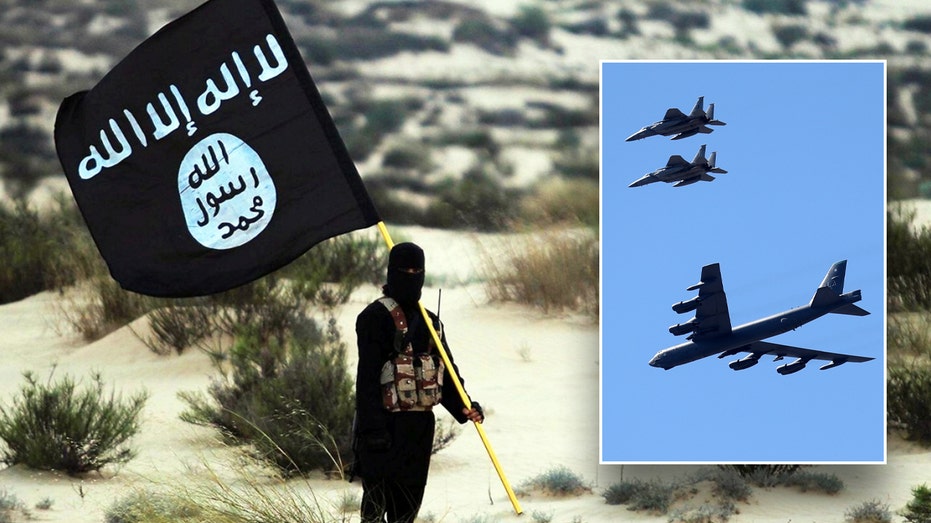Frontline report: Ukrainian forces repel Russian frontal attacks in Vuhledar but face encirclement risk
Russian forces intensify their assault on Vuhledar, threatening Ukrainian supply routes. While Ukrainian troops repelled frontal attacks, they may withdraw to Novoukrainka if Russian pressure continues. The upcoming rainy season could slow further Russian advances.
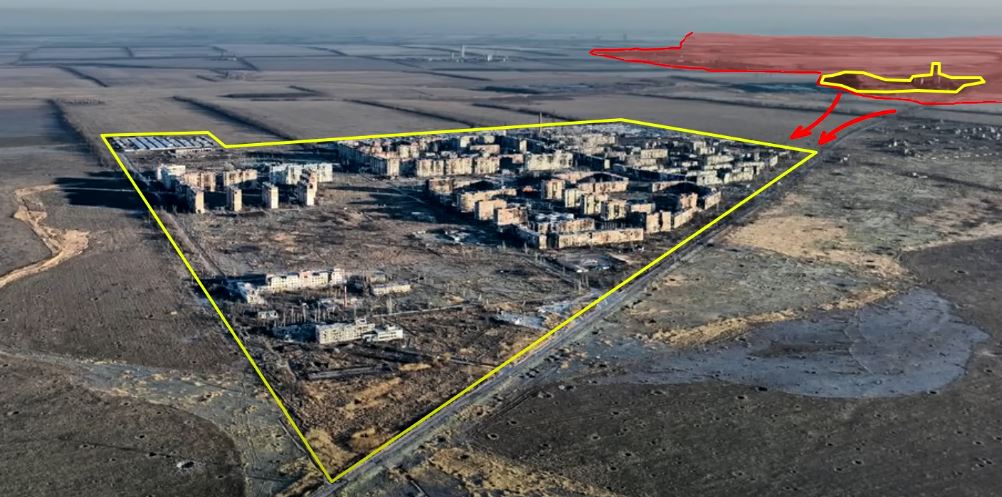

27 September. Today there are a lot of updates from the Kurakhove direction.
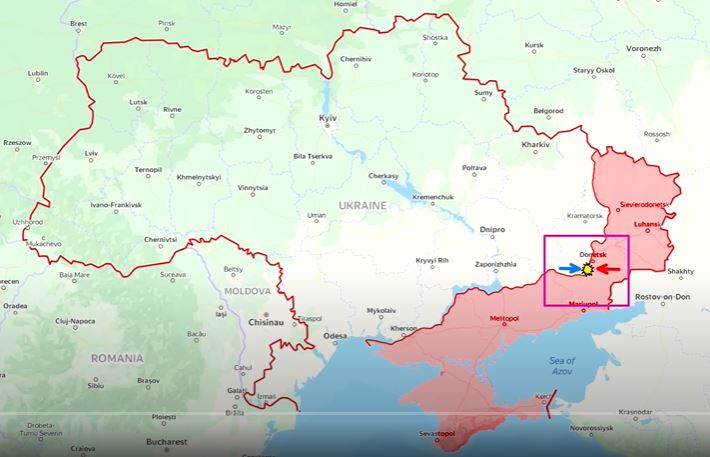
Russian Vuhledar assault
The intensity of Russian assaults in the area of Vuhledar increased significantly, with Russian advances on the flanks of the city while the Ukrainians successfully repelled direct frontal assaults.
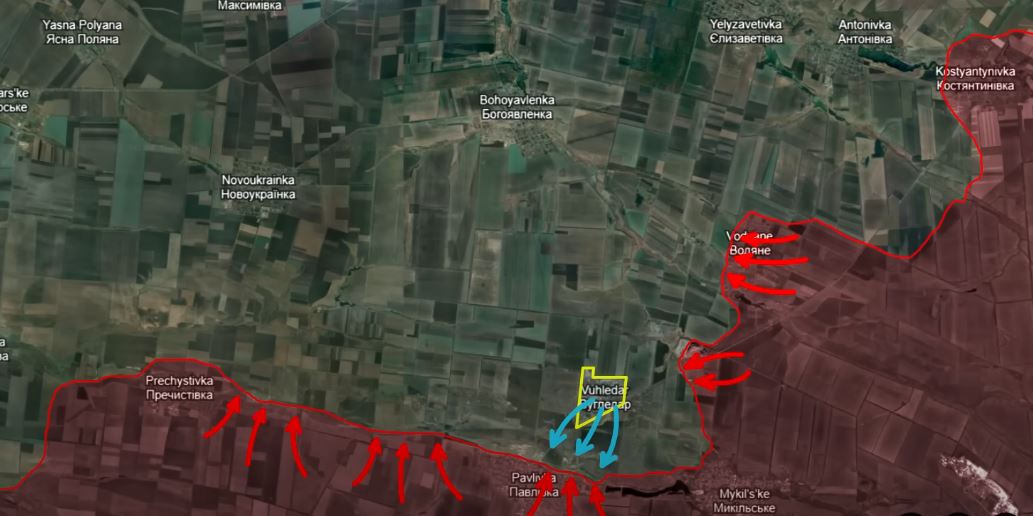
The situation in the Vuhledar area is becoming more complex and dynamic for the Ukrainian defenders as Russians are once again trying to assault the city for the third time in the war.
One of the main vectors of the Russian assault was aimed directly at Vuhledar from the south. This direction posed significant risks for Russian stormtroopers and armored vehicles, as the vast fields surrounding the city made them easy targets for Ukrainian forces stationed in the high-rise buildings.
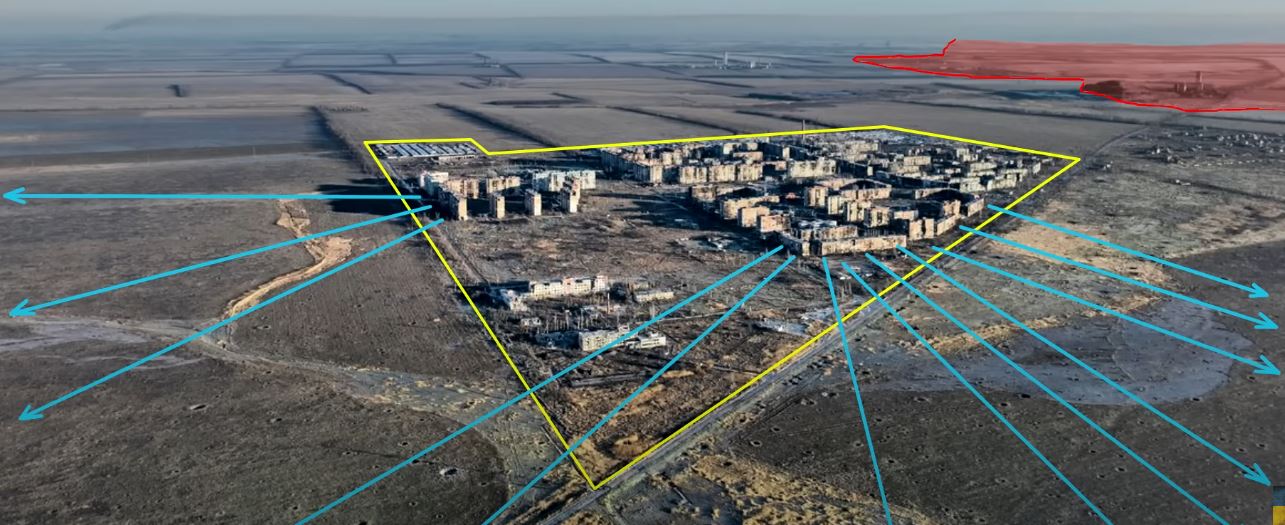
Despite this, the Russian command proceeded with its preparations, gathering forces in Pavlivka, south of Vuhledar. Combat footage from Ukrainian drone operators of the 72nd Motorized Brigade shows them spotting a group of Russian stormtroopers on motorcycles heading to an assembly point in Pavlivka. The Ukrainian drones then struck, destroying the Russian forces and halting the assault before it could begin. The original uncensored combat footage can be found on our Telegram channel through the link in the description.
Eastern Vuhledar
In the eastern part of Vuhledar, the situation remains more fluid. Russian forces previously seized control of the high-rise buildings at the South-Donbas Number One coal mine complex, using the area as a staging ground for assaults on Vuhledar from the east. Additionally, the high-rise buildings in Vuhledar, where Ukrainian firing positions are concentrated, face the plains to the south toward Pavlivka.

This positioning makes Russian assaults from the road east of the coal mine safer, as they are less exposed to Ukrainian fire. In preparation for these assaults, Russian artillery heavily bombarded the city with Tornado-S rocket systems, attempting to weaken Ukrainian defenses ahead of a full-scale ground assault to capture the town. However, geolocated footage reveals that after several ground assaults, only a small number of Russian stormtroopers managed to enter the city and take positions in nearby buildings.
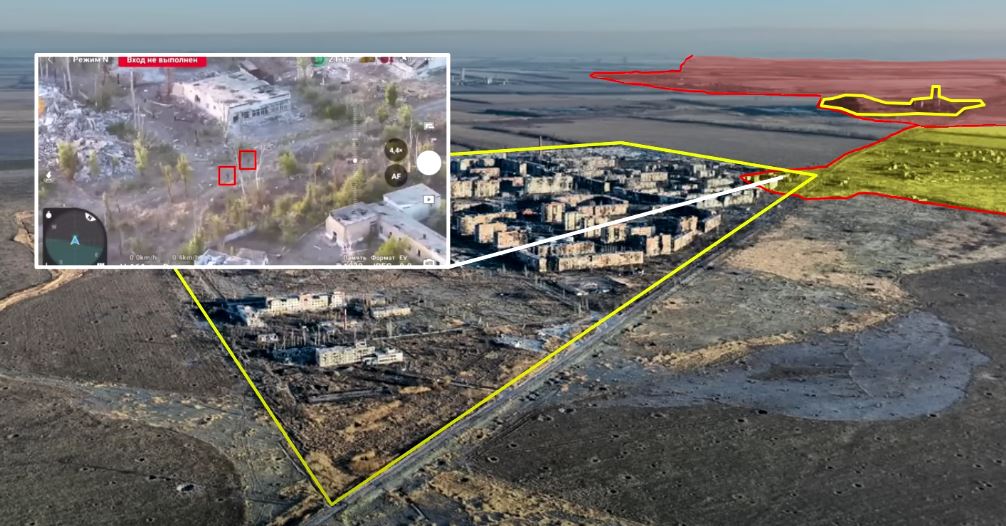
According to Ukrainian fighters, due to the limited number of Russian troops in the area, they are unlikely to hold these positions for long and will likely be driven out by Ukrainian forces inside Vuhledar.
Northern Vuhledar
To the north of Vuhledar, the situation is far more complex.
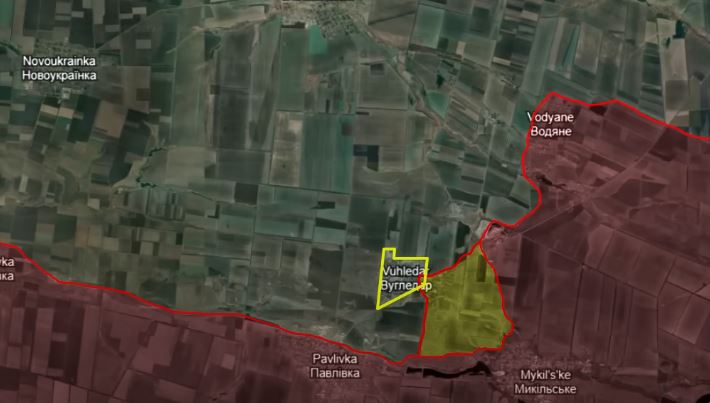
Russian stormtroopers previously captured Vodiane after suffering heavy casualties during their assaults. Following this, Russian command quickly decided to advance toward the South-Donbas Coal Mine Number Three. Combat footage from the area shows intense Russian artillery fire targeting the coal mine to suppress Ukrainian positions. Once the barrage ended, a platoon-sized mechanized assault force moved across the fields between Vodiane and the coal mine. With Ukrainian positions still suppressed, the Russian infantry dismounted upon entering the coal mine complex and immediately opened fire. Following this, the Russian command sent another mechanized platoon to reinforce the assault on the coal mine, again taking advantage of the success of the heavy artillery fire, which kept Ukrainian troops in shelters. Although the Russian forces initially failed to fully capture the coal mine, the Ukrainian troops chose to withdraw to more defensible positions.
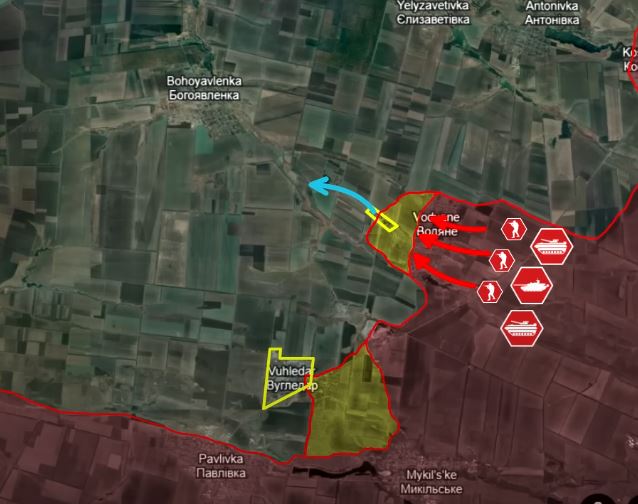
Before retreating, the Ukrainians demolished the high-rise towers of Coal Mine Number Three, preventing the Russians from gaining fire control over the surrounding areas and diminishing the mine’s tactical value. The original uncensored combat footage can be found on our Telegram channel as well.
Western Vuhledar
To the west of Vuhledar, near Prechistivka, Russian forces are concentrating efforts to cross the Kashlahach River and use the bridgehead to encircle Vuhledar and advance toward the Berestova gully. Combat footage shows Russian stormtroopers from the 40th Marine Brigade dismounting from armored transports and storming Ukrainian trenches in assault squads of eight troops each. The intensity of the Russian assaults in this area has expanded their bridgehead across the Kashlahach River, bringing them dangerously close to Vuhledar and rendering one of the main Ukrainian supply roads unusable due to physical Russian control of it.
Threats
The potential for Russian fire control over supply routes is a major concern for the several hundred Ukrainian troops in the town, primarily from the elite 72nd Mechanized Brigade.
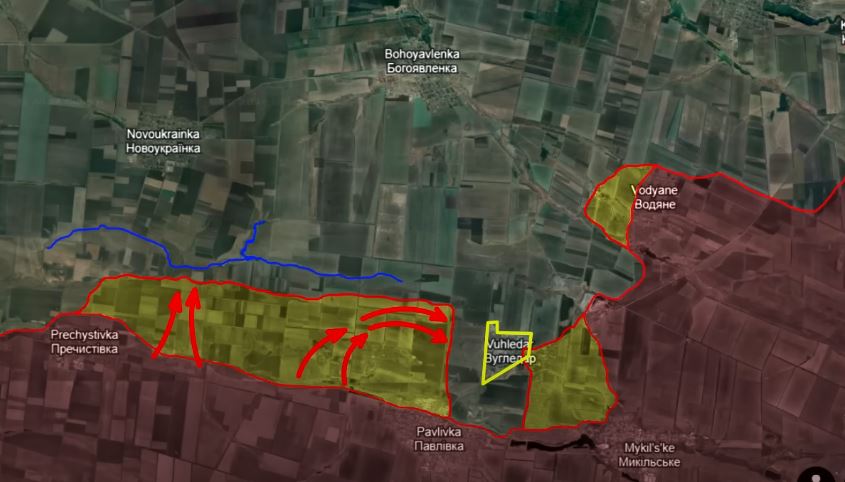
Russian positions north of Prechistivka, combined with strong firing positions at the Terrikon (spoil tip) of the South Donbas Mine Number One, have effectively trapped Ukrainian forces in a cauldron where all critical supply roads are visible and vulnerable to Russian artillery and drone strikes. If Ukrainian forces can push the Russians back from the open fields closer to Prechistivka, they could significantly reduce Russian pressure on the logistical routes to Vuhledar. This would help the Ukrainians maintain their position in the city.
However, if the situation continues to deteriorate, they may be forced to withdraw to more secure positions in Novoukrainka to the north.
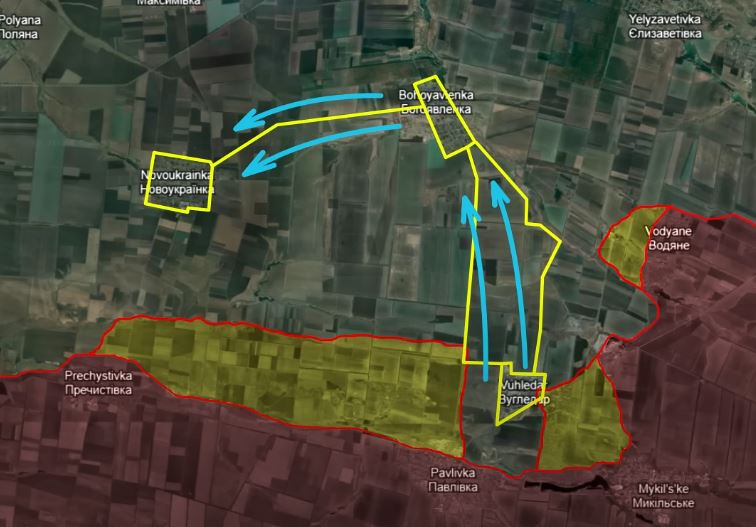
The potential withdrawal of Ukrainian forces from Vuhledar is not as critical as media portrayals suggest. The next Ukrainian stronghold is Novoukrainka, and a withdrawal to the settlement would stabilize the situation even if Vuhledar falls, limiting the Russian advance to around 5 kilometers. If we look at the topographic map, we can see that Novoukrainka sits on the same hill ridge as Vuhledar, offering similar geographic and tactical advantages.
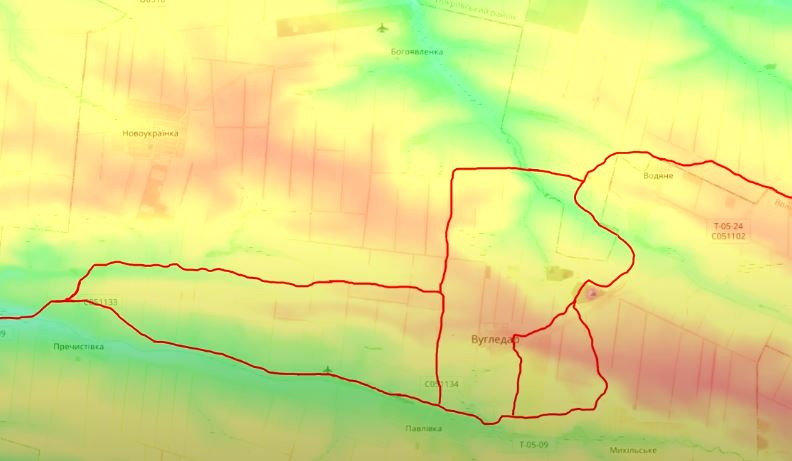
Thus, the Russian advance from Vodiane would likely be halted at Bohoyavlenka, while their advance from the south and east would be stopped at Novoukrainka.
Weather
Additionally, the upcoming rainy season expected in a few weeks will make it easier for Ukrainian forces to repel further Russian advances.

The imminent mud season is actually the prime reason why Russians push in this direction no matter the cost. They understand that if they fail to secure these gains now, then their whole summer campaign would be rendered useless.
To slow down Russian assaults around Vuhledar, Ukrainian forces launched missile strikes on the largest Russian ammunition warehouses in Mariupol.
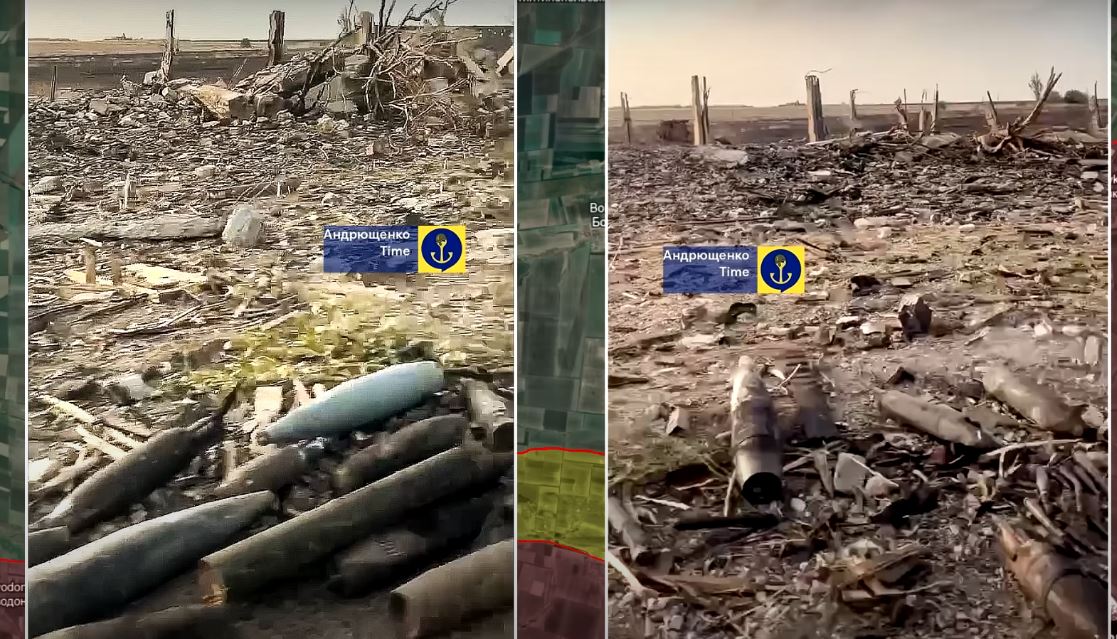
Satellite footage revealed the aftermath, showing fires and explosions on the outskirts of the city. Ukrainian rocket artillery successfully struck the targets, and favorable winds made the widespread damage visible. Images from the site show the extensive destruction of the Russian ammo storage, where nearly everything was obliterated.
Overall, the Ukrainians are engaged in the most intense battle for Vuhledar since the start of fighting in this area. While they successfully prevent and defeat Russian frontal assaults, the Russian flank assaults risk placing Ukrainians in a cauldron. Ukrainian forces could maintain stable control of Vuhledar or withdraw depending on the outcome of further fighting.
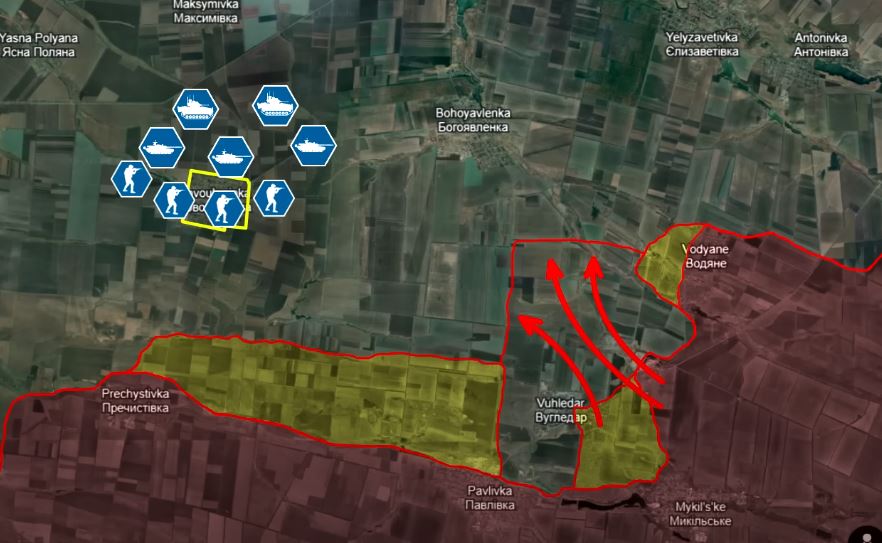
As a precautionary measure in case they withdraw, the Ukrainian command prepared to fortify and withdraw defenders of Vuhledar to Novoukrainka, which has the topographic and defense features to become the second Vuhledar and prevent any further frontline collapse.
In our regular frontline report, we pair up with the military blogger Reporting from Ukraine to keep you informed about what is happening on the battlefield in the Russo-Ukrainian war.
You could close this page. Or you could join our community and help us produce more materials like this.
We keep our reporting open and accessible to everyone because we believe in the power of free information. This is why our small, cost-effective team depends on the support of readers like you to bring deliver timely news, quality analysis, and on-the-ground reports about Russia's war against Ukraine and Ukraine's struggle to build a democratic society.
A little bit goes a long way: for as little as the cost of one cup of coffee a month, you can help build bridges between Ukraine and the rest of the world, plus become a co-creator and vote for topics we should cover next. Become a patron or see other ways to support.

